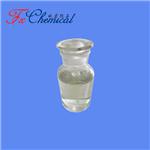Physical properties
1-Dodecanol is a white low melting crystalline solid that has a melting point of 24°C.The air odor threshold for dodecyl alcohol (isomer not specified) is reported to be 7.1 ppb.
Chemical Properties
Lauryl alcohol has a characteristic fatty odor; unpleasant at high concentrations, but delicate and floral on dilution. 1-Dodecanol is a saturated 12-carbon fatty alcohol obtained from coconut oil fatty acids. It has a fatty, waxy flavor and is used in detergents, lubricating oils, and pharmaceuticals.
Occurrence
Reported found in the oil of Mexican lime and in the oil from flowers of Furcraea gigantean. Also reported
found in apple, banana, sour cherry, citrus peel oils, melon, pineapple, potato, thymus, cheeses, butter, milk powder, chicken and beef
fat, cooked pork, beer, whiskies, white wine, peanuts, beans, mushrooms, mango, coriander seed and leaf, rice, Bourbon vanilla,
endive, crab, clam, Cape gooseberry, pawpaw and maté.
Uses
1-Dodecanol is used in chemical formulations for a variety of purposes, including as an emulsion stabilizer, a skin-conditioning emollient, and a viscosity-increasing agent.
Uses
1-Dodecanol is used as a cosmetic, textile auxiliaries, synthetic oil, emulsifiers and flotation agent of raw materials, a detergent raw material, a foaming agent of the toothpaste.
Production Methods
1-Dodecanol is produced commercially by the oxo process
and from ethylene by the Ziegler process, which involves
oxidation of trialkylaluminum compounds. It can also be
produced by sodium reduction or high-pressure hydrogenation
of esters of naturally occurring lauric acid.
Preparation
Commercially 1-Dodecanol may be prepared by hydrogenation of lauric acid; normally employed as a replacement for the corresponding aldehyde.
Definition
ChEBI: 1-Dodecanol is a fatty alcohol that is dodecane in which a hydrogen from one of the methyl groups is replaced by a hydroxy group. It is registered for use in apple and pear orchards as a Lepidopteran pheromone/sex attractant, used to disrupt the mating behaviour of certa n moths whose larvae destroy crops.
Aroma threshold values
Detection: 73 to 820 ppb
General Description
Colorless thick liquid with a sweet odor. Floats on water. Freezing point is 75°F.
Reactivity Profile
Dodecyl alcohol is an alcohol. Flammable and/or toxic gases are generated by the combination of alcohols with alkali metals, nitrides, and strong reducing agents. They react with oxoacids and carboxylic acids to form esters plus water. Oxidizing agents convert them to aldehydes or ketones. Alcohols exhibit both weak acid and weak base behavior. They may initiate the polymerization of isocyanates and epoxides.
Health Hazard
Liquid will cause burning of the eyes and may irritate skin.
Flammability and Explosibility
Non flammable
Safety Profile
Moderately toxic by
intraperitoneal route. Mildly toxic by ingestion. A
severe human skin irritant. Questionable
carcinogen with experimental tumorigenic data.
Combustible when exposed to heat or flame; can
react with oxidizing materials. To fight fire, use dry
chemical, CO2. When heated to decomposition it
emits acrid smoke and irritating fumes
Carcinogenicity
1-Dodecanol showed weak tumor-promoting activity when applied three times a week
for 60 weeks to the skin of mice that had previously received
an initiating dose of dimethylbenz[a]anthracene. Papillomas
developed in 2 of 30 mice after 39 and 49 weeks of treatment.
Purification Methods
Crystallise dodecanol from aqueous EtOH, and distil it through a spinning-band column under vacuum. [Ford & Marvel Org Synth 10 62 1930, Beilstein 1 IV 1844.]






